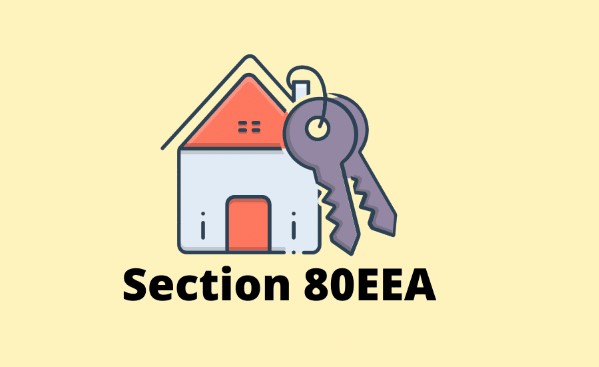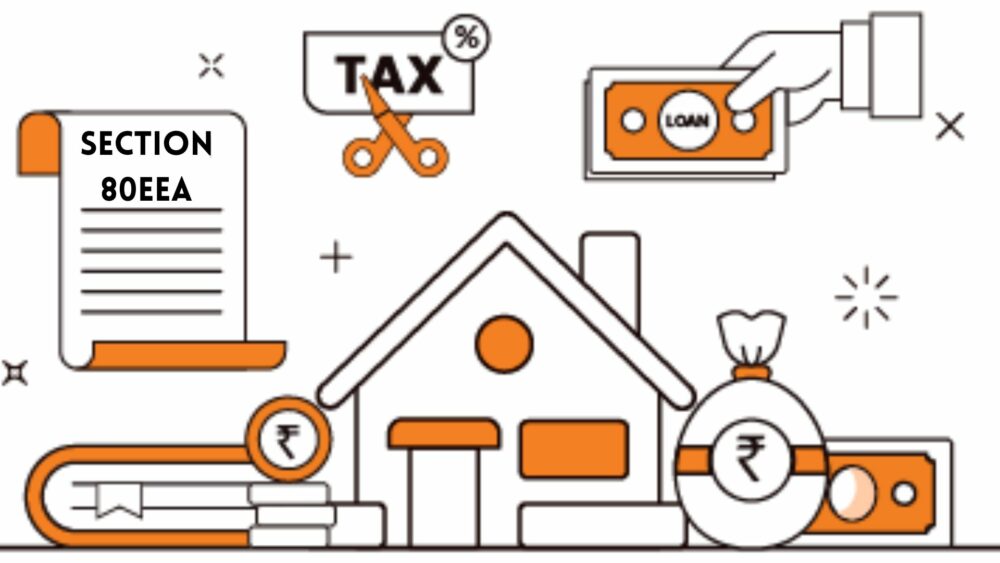In a bid to make housing more accessible, the Government of India launched its “Housing for All” initiative. This led to the introduction of Section 80EE in the Income Tax Act in 2013-14, offering tax benefits for home loan borrowers and first-time buyers. Fast forward to Budget 2019, where Finance Minister Nirmala Sitharaman disclosed her vision for “Affordable Housing.” This paved the way for Section 80EEA, allowing additional deductions on home loan interest starting from FY 2019-20, specifically tailored for first-time buyers.
What is Section 80EEA?
Sec 80EEA of the Income Tax Act permits individuals to claim a deduction for the interest paid on a Housing Loan. Construction of a residential house is not covered under this section. Individuals can claim deductions of up to ₹1,50,000 per financial year under Section 80EEA. Additionally, this deduction can be claimed until the loan is fully repaid. It’s crucial to understand that this deduction is applicable only if the loan was utilized for acquiring a residential property.
How to Avail Deduction Under Section 80EEA?
To avail of deductions under Section 80EEA, certain conditions must be met:
| Loan Conditions: | Individuals must secure a housing loan from a financial institution or housing finance company to purchase a residential property. This loan should be sanctioned between 1st April 2019 and 31st March 2022. |
| Stamp Duty Value: | The stamp duty value of the property should not exceed ₹45 lakh. |
| Eligibility Criteria: | Individuals must not be eligible for a deduction under Section 80EE, and they must qualify as first-time homebuyers, not owning any residential property at the time of loan sanction. |
| Carpet Area Restrictions: | Specific criteria concerning the carpet area of the house property apply. In metropolitan cities, the carpet area should not surpass 60 square metres, while in other cities or towns, the limit extends to 90 square metres. These regulations have been effective since 1st September 2019, for approved affordable real estate projects. |
| Home Loan Cap: | Within this Section, the loan amount availed must not exceed ₹35 lakh. |
Availing Deduction Under Section 80EEA
- Stamp Duty and Registration Fee Tax Benefits:
Under Section 80C, you can avail tax deductions for stamp duty and registration fees. However, these deductions must fall within the overall limit of ₹1,50,000, applied to principal payments. Additionally, this benefit can only be claimed in the year in which the expenses are incurred.
- Tax Benefits for Interest Payments on Properties Under Construction
According to regulations, deductions are permitted for both pre-construction and post-construction period interest. Pre-construction loan interest is deductible in five equal annual instalments, starting from the year of property completion or acquisition. Thus, the total interest deduction allowed under Section 24(b) is one-fifth of the interest about the pre-construction period, along with interest from the post-construction period.
- Home Loan Interest Tax Relief Under Section 24B
Utilising Section 80EEA, individuals can claim deductions under Section 24B for the interest paid on home loans. This section encompasses general provisions related to home loan interest deductions. A maximum deduction of ₹2,00,000 can be claimed annually from gross income for a self-occupied residence, provided the house’s acquisition or construction is completed within five years. If one satisfies the conditions of both Section 24 and Section 80EEA, they are eligible to claim benefits under both sections.
- Joint Home Loan Tax Advantages
In the case of a joint home loan, each borrower can claim deductions for home loan interest up to ₹2,00,000 under Section 24(b) and deductions for principal repayment up to ₹1,50,000 under Section 80C of the Income Tax Act. Both applicants must be co-owners of the property and contribute to the EMIs to claim these deductions.
- Tax Benefits for Second Home Loans
Taking a loan for a second house allows one to enjoy similar benefits, but the total deductions are subject to regulations.
Conclusion
Section 80EEA of the Income Tax Act offers an attractive opportunity for first-time homebuyers in India, allowing them to enjoy extended tax deductions of up to ₹1.5 lakhs. This deduction complements the existing benefits provided by sections 24 and 80C, providing additional relief to eligible individuals.
However, it’s essential to meet specific conditions outlined under Section 80EEA to qualify for this deduction, ensuring compliance with regulatory requirements while maximizing tax savings for homeowners.
Frequently Asked Questions
Q1. What does Section 80EEA of the Income Tax Act offer?
Section 80EEA offers a deduction on the principal amount of up to Rs 150,000 for homeowners. This applies to loans sanctioned between April 1, 2019, and March 31, 2022, for one house only.
Q2. Who can benefit from Section 80EEA?
Both Indian residents and non-residents can claim deductions under Section 80EEA. Individuals owning their own homes or living in rented properties can benefit from this section.
Q3. Is Section 80EEA deduction available for multiple houses?
No, the Section 80EEA deduction is currently applicable for just one house.
Q4. What is the difference between Section 80EE and 80EEA?
To further extend benefits for low-cost housing, Section 80EEA was introduced. Section 80EE allowed for a deduction of interest paid on housing loans for certain fiscal years; 80EEA further extends this benefit.
Q5. Can non-residents claim deductions under Section 80EEA?
Yes, non-residents can also claim deductions under Section 80EEA, provided they meet the specified criteria.
Q6. Are there any restrictions to claiming deductions under Section 80EEA?
Yes, deductions under Section 80EEA apply only to loans sanctioned between April 1, 2019, and March 31, 2022, and only for one house per individual.



